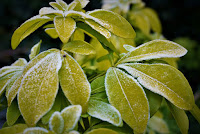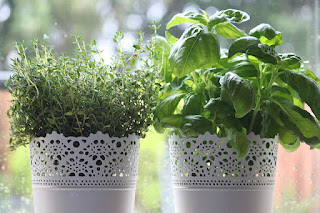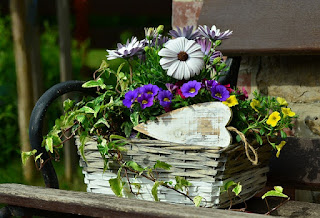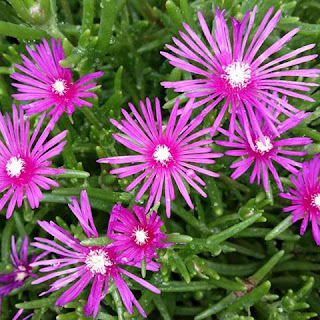You’ve probably noticed that the prices of many commodities have
gone up and their availability has diminished. The problems didn’t
just begin with COVID lockdowns and the war in Ukraine. Those factors
have contributed, but our economic problems have been building up for
a long time. We’re now beginning to feel the result of many years
of government and central bank mismanagement. As a result, people
like us are thinking about how we can prepare for more inflation,
recession and supply chain shortages.
Among the necessities of life are food, fuel and medicine.
Thankfully, we can supplement them to some extent ourselves. Consider
medicine, for example. Many commonly grown garden plants are
beneficial for good health and treating what ails us. Can we do
without our pharmacies? Absolutely not. Should we try to
self-medicate without a doctor’s supervision? Again, the answer is
“NO.” Some medicinal plants such as Gelsemium can be dangerous if
taken without professional guidance. But it’s good to know that we
can cultivate some of them in our own gardens, if only for the
pleasures of growing them, satisfying our curiosity and for their
ornamental value. Beauty is therapeutic. Is it not?
Consider the following few examples, and please follow the links to
other interesting and useful information.
Achillea millefolium – Yarrow, Staunch-Weed – has been used since
ancient times to stop bleeding, to sedate and treat anxiety, cure
liver and urinary problems, improve digestion and reduce high blood
pressure.
Ajuga reptans – Bugleweed is a traditional remedy to stop bleeding
and bruising, mend broken bones, soothe throat irritation and mouth
ulcers.
Aloe vera is well known for its healing properties for soothing
superficial cuts, burns, insect bites and abrasions. I recently
mentioned this to a medical professional who was sunburned. He was
skeptical. “There are no studies proving Aloe’s efficacy in
treating sunburns,” he said. “That’s an argument from silence,”
I replied. I’ve applied it myself to burns to prevent blistering
and scarring, and I know of many more who swear by it.
Basil is delicious and nutritious, as we all know. But it also
contains antioxidants such as lutein and beta-carotene. These help to
fight free radicals in the body. Free radicals can come from the
foods we eat. Though they don’t last long, they can lead to cell
damage and contribute to other conditions such as cancer, heart
disease, arthritis, and diabetes.
Campsis radicans - Trumpet Creeper is useful for promoting perspiration and for treating wounds.
Dandelions are seldom welcome in our lawns and gardens, but they
deserve to live. The botanical name, Taraxacum officinale, points to
its traditional medicinal use as an anti-inflammatory herb. It has
long been used as a purifying tonic, but it’s claimed to be
effective in treating skin conditions, diabetes, liver and digestive
disorders, among other ailments. Instead of eradicating it, plant it
on purpose. It’s easy to grow. The leaves can be added to salads
and dried for tea. The roots can be dried, ground, and used as a
coffee substitute. Don’t expect it to taste like coffee, though.
.jpg)
Echinacea purpurea – Coneflower – is a lovely perennial that’s
native to North America. It was long used by indigenous tribes to
support the immune system. It also contains antioxidants for treating
infections of the skin, fevers, and a host of related health issues.
In addition to its medicinal value, it is very ornamental. It
attracts birds and pollinators. Echinacea is an absolute MUST-HAVE
for your medicinal garden.

one
because it’s sometimes seen as an ingredient in homeopathic
preparations, but it’s not to be prepared at home. Leave that to
the Naturopaths. Naturalmedicinalherbs.net states,”The roots are
analgesic, antispasmodic, diaphoretic, febrifuge, hypnotic,
mydriatic, nervine, sedative and vasodilator. A powerful depressant
of the central nervous system, deadening pain and reducing spasms. It
is said to suspend and hold in check muscular irritability and
nervous excitement with more force and power than any known remedy.
Whilst it relaxes the muscles, it also relieves all sense of pain. It
is used internally in the treatment of neuralgia, migraine, sciatica,
toothache, severe pain (especially in terminal illnesses or
accidents) and meningitis. Externally it has been used as a folk
remedy for cancer. The root is best harvested in the autumn and dried
carefully for later use. Extreme care is advised with the use of this
plant, it should only be used under the supervision of a qualified
practitioner. Excessive doses cause respiratory depression,
giddiness, double vision and death. It should not be prescribed for
patients with heart disease, hypotension or myasthenia gravis. See
also the notes above on toxicity. The fresh root is used to make a
homeopathic remedy. It is used in the treatment of a variety of
complaints, including fevers, flu and headaches.” Enough said. Grow
it as an ornamental or for sake of curiosity, but don’t try
self-medicating. You might not even live to regret it.
.jpg)
Hemerocallis fulva – Common daylily. I wrote in another blog article about eating daylilies. They saying, “Let food by thy
medicine” is attributed to Hippocrates. Well, here you go. Daylily
is also used in medicine to increase urine flow, as a laxative, to
reduce fever, stop vomiting, reduce muscle spasms, reduce pain and
sedate. Daylily tubers are said to be antimicrobial and able to kill
some internal parasites.
Heuchera micrantha – Alum Root, Coral Bells. The root is
antiseptic, astringent, reduces inflammation and fever, and has been
used to treat eye infections. A tea has been used to treat liver
problems and sore throats. Chewing a piece of root, cleaned and
peeled, soothes sore gums.
Hypericum spp – St. John’s Wort. Naturalmedicinalherbs.net
states, “
-480x480%20(2021_06_17%2021_41_29%20UTC).jpg)
Whether other species are as beneficial, I don’t know.
Lamiastrum galeobdolon – Yellow Archangel suppresses muscle spasms,
tightens tissues, promotes urine production, helps to discharge
mucus, and expectorant, stops bleeding and tightens blood vessels.
Lavandula angustifolia – Lavender. Lavender is best known for its
soothing aroma. But it is also a useful medicinal herb. It soothes
the nerves, can be applied to the skin to help heal wounds, burns,
and prevents scar tissue. It’s antiseptic, sweetens the breath, and
improves kidney function. Rubbing lavender oil on the temples is said
to cure headaches.
Liriope spp. – Liriope aka Lilyturf root has been used as an anti-inflammatory
agent, an aphrodisiac, a treatment for allergies, and as a stimulant.
Sometimes the roots have been candied and eaten as a snack.
Lysimachia nummularia – Creeping Jenny, Moneywort has been used to
treat scurvy, diarrhea and internal bleeding. It increases urine
production and is astringent.
Nepeta spp. – Catmint, Catnip. Everyone knows what it does to most
cats, but it also has many medicinal uses. Tea from the leaves is
useful for treating digestive disorders, reducing fevers, soothing
colds and flu. It calms muscle spasms and coughs, relieves gas and
increases perspiration.
Ophiopogon japonicus – Snakebeard, Mondo is a cough suppressant and
expectorant, sedative, fever reducer and treatment for dry mouth. It
has also been used as an aphrodisiac and cure for anxiety. (I guess
if you think it works something amazing happens.)
Black-Eye Susan - Rudbeckia hirta has been used to treat earaches, sores, colds, and even dropsy.
Thymus spp. – Thyme. In addition to culinary uses, thyme can be
used in deodorant. It is also antiseptic and disinfectant.
This is by no means an exhaustive review of medicinal plants, but
should give you something as you begin prepping. The next thing to
research will be about how to use them.
Return to GoGardenNow.com.







.jpg)

.jpg)
-480x480%20(2021_06_17%2021_41_29%20UTC).jpg)
.jpg)

.jpg)
.jpg)


.jpg)



















